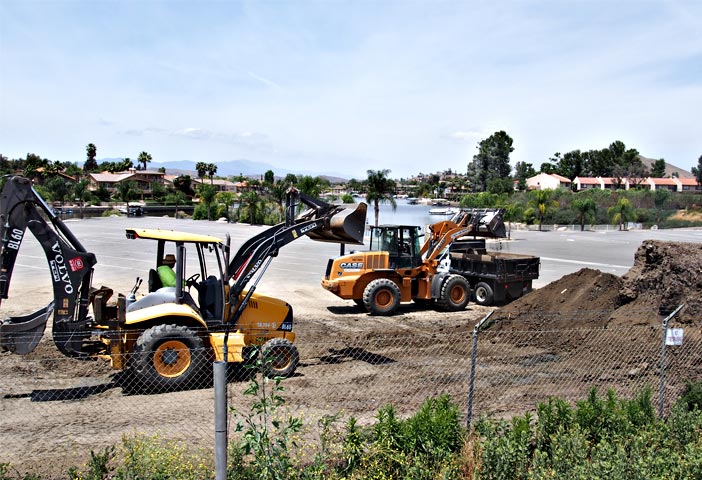Dog park planned for former berm area
The removal of the berm next to the East Port launch ramp to make room for a real dog park brings to mind a historic undertaking that brought both excitement and disappointment to Canyon Lake residents: the Dredging Project.
It’s been a decade since “Nessie,” the dredge, scooped muck from the bottom of East Port – only making it so far as the cove next to the condominiums before legal problems sent her packing.
Nessie! Oh, the joy she brought when she first arrived in the waters of the East Bay in May 2005. Oh, the consternation the yellow beast created when her components couldn’t keep up with the demands of sucking sediment from the East Bay’s depths; the frustration she stirred up when she sat in dry dock for months, waiting for new equipment to help her run more efficiently; the problems she caused when a lawsuit claimed she was involved in a public works project, and a judge determined those who operated her should be paid state prevailing wages.
Oh, sad day for all residents who hoped Nessie would be one of the solutions to Canyon Lake’s water quality problems when the dredge and all its equipment had to be sold.
“Nessie N8DX” was the official name given by the manufacturers of the dredge that plied the eastern end of East Bay and Lucky Cove, scooping up 40 years of silt deposited by Salt Creek.
According to LESJWA spokesperson Mark Norris, it was with great hope and a valiant effort on the part of the LESJWA board, the Regional Water Quality Control Board, City Councilman Jack Wamsley and other City and POA officials that a portion of the $15 million dollars in funds from the Clean Water Act, approved by California voters in the late 1990s, was provided to the Property Owners Association to dredge Canyon Lake, which is part of LESJWA’s 750-mile watershed.
In those early days, the Dredging Project was awarded the 2005 Unique Collaboration Award from the Santa Ana Watershed Coalition. The organization recognized the cooperation between the various LESJWA members to fund and implement the project. Initially promising $900,000 – money the POA Board decided to use for the purchase of the dredge.
LESJWA later added another $339,233 as the costs associated with dredging grew when the project stalled while waiting for permits from the Army Corps of Engineers and the Department of Fish and Game.
Once the permits came through and the dredge was finally up and running with a new and improved de-watering system, it was able to remove between 200 and 250 cubic yards of sediment from the lake each day it ran – a total of 20,000 cubic yards. The work was performed by specially trained members of the Operations Department.
Then, according to a report provided at the time by POA Corporate Counsel Pete Racobs, “In July 2005, the Southern California Labor/Management Operating Engineers Contract Compliance Committee filed a claim with the California Department of Industrial Relations asserting the Association’s agreement with LESJWA converted the dredging project from a private work-of-improvement to a public work-of-improvement for which state prevailing wages must be paid.”
“Both the Association and LESJWA filed responses to the claim, denying that the project qualified as a public work. In June 2007, the Department issued a letter concluding the dredging project was a public work-of-improvement . . . ” Racobs reported.
In effect, accepting public funds from LESJWA doomed the project from the start; though, according to Jack, none of those involved in putting the deal together predicted it would be labeled a “public work-of-improvement,” including lawyers for Canyon Lake, LESJWA, EVMWD and at the State level.
In the end, it was the litigation with the Southern California Labor/Management Operating Engineers Contract Compliance Committee and the threat of further litigation (Bolanos lawsuit) that brought the dredging to a halt.
For a long time, huge piles of the dredged sediment sat near the launch ramp until, in February 2008, civil engineers Albert A. Webb Associates developed a plan to use the material in a berm. Grading the area and building the berm began in Spring 2009, along with improvements to the launch ramp and parking lot.
Now Webb once again is involved with the design of the area. Once the berm is removed, the area will be turned into a fenced and grassy dog park. Plans eventually call for a new block wall along the sidewalk next to Goetz Rd. that will provide sound attenuation for residents that live toward the end of East Bay.
Previous Article
Fiesta Day 2014 crowd by BB


 April 26, 2024
April 26, 2024